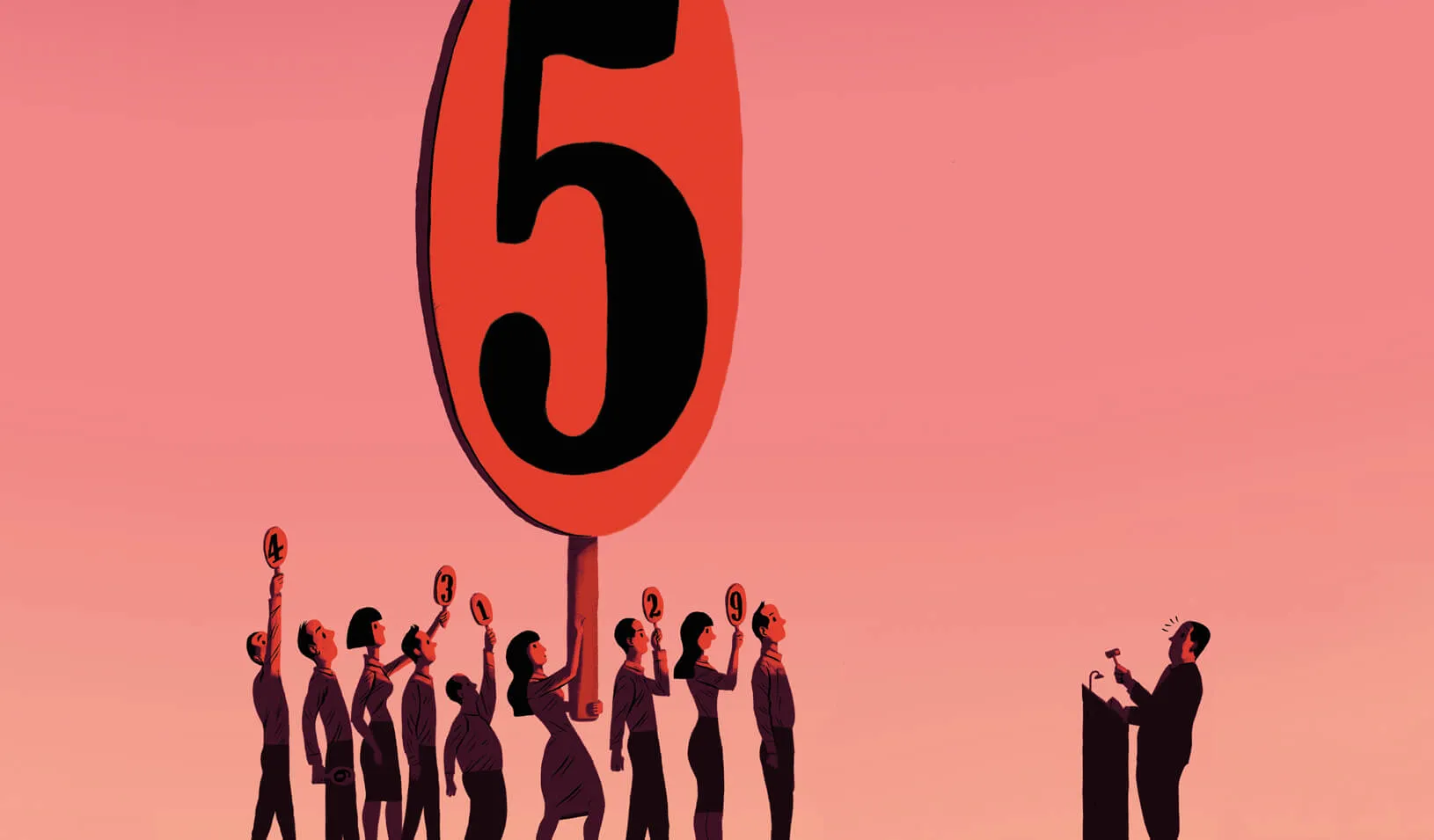Rigged Auctions? Why Top Bidders Don’t Always Feel Like Winners
New research casts suspicion about auctions in the online advertising market.
August 21, 2018
Many advertisers in online auctions suspect that the bidding is rigged. Research shows they may be right. | Paul Blow
You may not realize it, but those digital ads that pop up when you browse through your favorite websites are the result of auctions that occur in milliseconds.
If you have been looking for car insurance, for example, digital auctioneers organize instant auctions in which insurance advertisers bid to place ads on the next page you load. It’s all run by algorithm and happens in less time than it takes for your page to load.
But there’s a heated controversy in this $200 billion online ad market: Many advertisers suspect that the bidding is rigged and they’re paying more for that ad than they should.
They may be right. In a new paper, Mohammad Akbarpour at Stanford Graduate School of Business and Shengwu Li at Harvard University confirm that the most common format of auctions for online ads do indeed give auctioneers ample opportunity to cheat. That can undermine the auctions themselves, if bidders become so skeptical that they stay away.
The concerns are so widespread, in fact, that a number of online ad auction firms are experimenting with different formats.
Unfortunately, the researchers warn, there is no perfect solution. “The goal here is to make sure that people think carefully about how to guard the guardians,” says Akbarpour. “What our paper essentially says is that anyone who runs an auction is on the horns of a dilemma.”
At a minimum, Akbarpour says, auction designers need to seriously weigh the possibility that auctioneers may not play by the rules. And if prospective buyers stay away from an auction because they suspect it’s rigged, the results will be bad for sellers as well as buyers, they note in their research, which won best paper at the Association for Computing Machinery’s annual conference on economics and computation.
The issue has implications for other types of auctions, from those run by Sotheby’s and Christie’s to the U.S. government’s auction of radio spectrum for mobile communications.
Potential for Problems
The controversy turns on what are called “second-price” auctions, which have been hailed as a great way to make the bidding simpler and less risky. In contrast to an old-fashioned “first-price” auction, where the top bidder pays exactly what he or she offered, the winner in a second-price auction only pays as much as the runner-up bidder had offered.
It sounds peculiar, but the advantage is that a bidder doesn’t have to do any kind of complex strategizing. “This is William Vickrey’s ingenious invention, which eventually got him a Nobel Prize,” says Li. “Your best strategy is to bid your true value, no matter what other bidders do.”
In a standard first-price auction with sealed bids, for example, bidders have to calculate not only what an item is worth to them but also how much their rivals are likely to offer. The trick is to bid more than anybody else — but not much more. That requires complex strategizing and educated guesswork, and it’s easy to make mistakes.
Most digital ad auctions have been variants of the second-price approach, which eliminates much of that risk and the need for strategizing. Google and Facebook dominate the market, but there is a whole industry of companies that run digital ad auctions for other media sites.
The concern about cheating stems from the fact that only the auctioneers know for certain what the second-highest bid was. If the top bid for placing an insurance ad was $60 per click, and the second-highest was $45, the auctioneer could plausibly claim that the second-highest bid was $55 and pocket the difference. If the bids are all sealed, who would know?
Similar questions come up in other auctions. At Sotheby’s and Christie’s, which run “ascending-price” auctions where people outbid each other until only one bidder is left, the auctioneers are allowed by law to juice up the action by creating fictitious “chandelier bids.” The auctioneers are only allowed to conjure up fake bids that are below the so-called “reserve price,” which is the lowest price that the seller will accept. But auctioneers generally don’t disclose the reserve price, so it’s hard for bidders to know if the auctioneer is truly playing by the rules.
Akbarpour and Li, however, find that the classic Sotheby’s-style auction has a self-policing quality. If the auction house makes too much use of fictitious “chandelier” bids, it risks losing a sale entirely because the real bidders simply drop out. Even though the auctioneer could cheat, it may not make sense to do so.
In fact, the researchers conclude that the two of the oldest auction designs — the “ascending-price” and “first-price” formats — both have real advantages in terms of ensuring honest auctioneers. If bidders stay away because they worry that an auction is rigged, the old ways may be the best. “These two auction formats are not historical accidents,” says Li. “They are auctions with the self-policing property, which matters for practical purposes.”
For media inquiries, visit the Newsroom.
Explore More

When Is It Too Late to Give Up Control of Your Finances?

Why a Plan to Encourage Search-Engine Competition Failed



